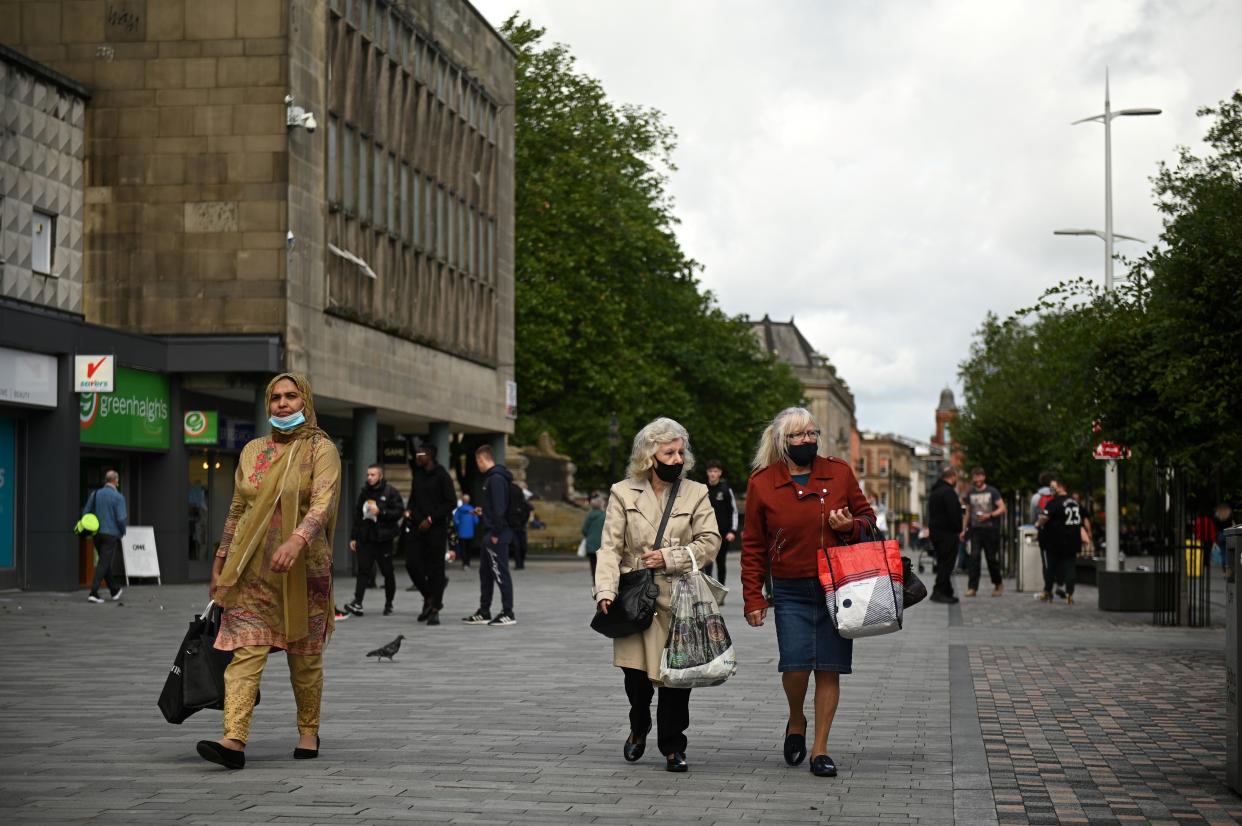COVID deaths increase in six out of nine regions of England

The number of deaths involving COVID-19 has increased in six of the nine English regions, figures from the Office for National Statistics (ONS) show.
In the week ending 18 September, the North West had the largest number of deaths involving COVID-19, with 39 people dying from the virus.
The region also saw the highest proportion of deaths involving coronavirus, with 3% of the nationwide total.
Other areas in which deaths were on the rise included the North East, where they increased from three to eight; the North West, up from 30 to 39; and Yorkshire and the Humber, increasing from 14 to 21.
Watch: Areas in England with most new cases per 100,000 people
The East Midlands saw a rise from 10 to 14 and the West Midlands from 7 to 15, while London coronavirus deaths also rose 6 to 13.
In the South East, however, the number of weekly COVID deaths decreased from 12 to 11 and in the South West they went from seven to five.
While the East saw no change in the weekly death rate which remained at eight for both the week ending 18 September and the previous week.
Read more: ‘Not fit to be PM’: Boris Johnson forced to apologise after failing to explain his own COVID rules
The total number of deaths registered in the UK, including those attributed to COVID, in the week ending 18 September was 10,784 - 361 deaths fewer than the week before.
Kevin McConway, emeritus professor of applied statistics at the Open University, said: "The rise in registered deaths with COVID on the certificate may well be the first sign of an increase linked to the increase in infections, but we'll have to wait for a week or two's more data to see whether and how that rise continues.
Watch: The penalty charges for people in England who do not self-isolate
"Another concerning feature, which is longer term, is that the number of deaths taking place at the person's home (from any cause) continues to run at levels considerably higher than the average of the previous five years.
"That's been the position right since the early days of the pandemic."
It comes as new restrictions are to be introduced in the North East following a rise in cases in the region.
Health secretary Matt Hancock announced the new measures in the Commons on Monday, banning households from mixing socially, whether in a private house or in a public space, such as a bar.
It had already been illegal for two households to mix inside or in a garden, but it was only guidance that they should not meet at public venues, including restaurants and pubs.
Coronavirus: what happened today
Click here to sign up to the latest news and information with our daily Catch-up newsletter



